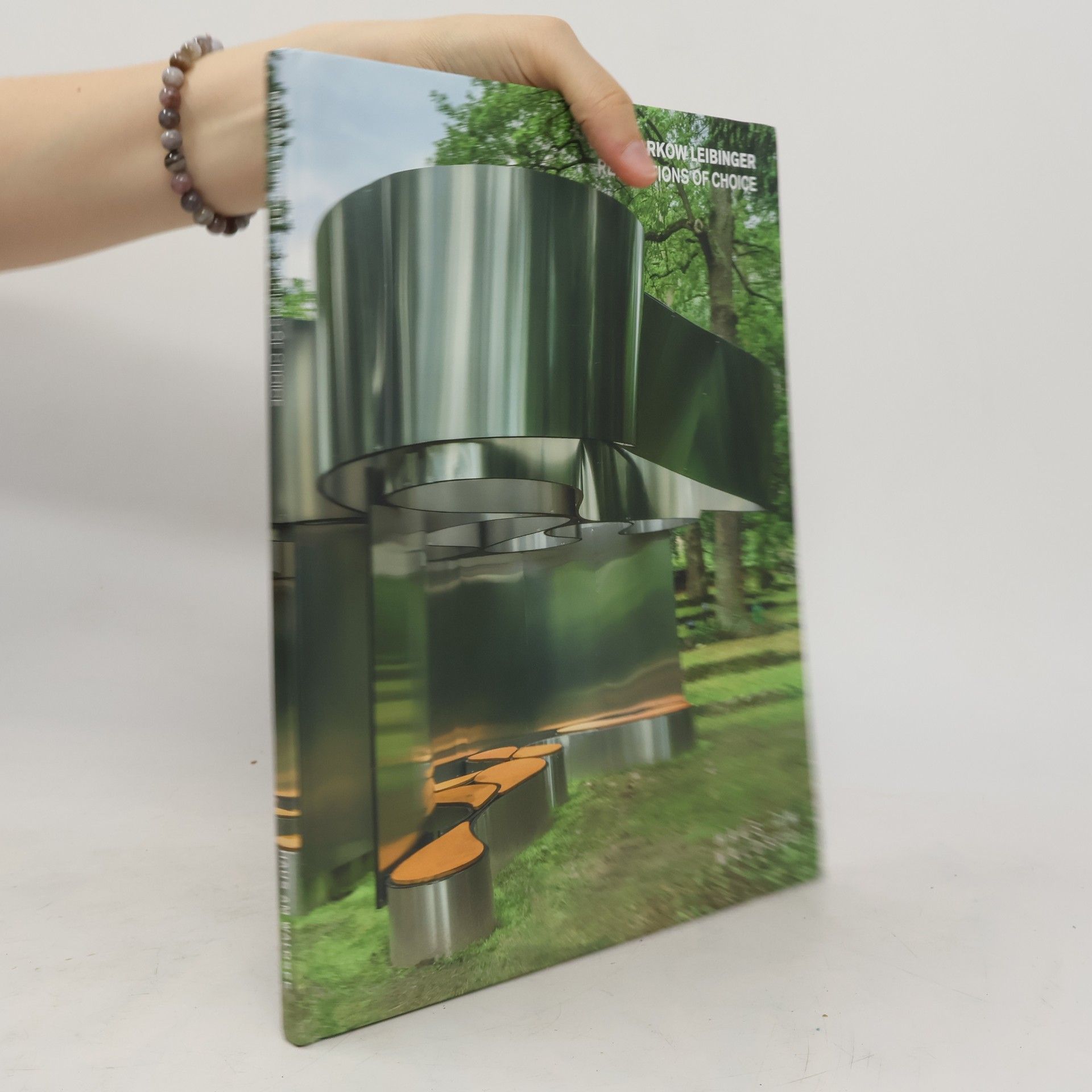Barkow Leibinger. Revolutions of Choice
- 63 Seiten
- 3 Lesestunden






Faraway galaxies and a faith in energies outside our current powers of comprehension and perception. In the show, three sculptors reflect on the intersections of art, science and philosophy across a century and from a Berlin point of view. By the early 1920s Naum Gabo viewed art as a means to knowledge of the physics of our planet. The Russian-Jewish artist, who had emigrated to Berlin, was permanently looking for new materials and ways to express himself. His extraordinary constructions made of diaphanous plastics were perceived to be pure science fiction. These days, Berta Fischer primarily works with acrylic glass. Essentially, her practice revolves around the choreography of light, transparency, colour and movement in space. Her installations engage the works of both Björn Dahlem and Naum Gabo in a close dialogue. Björn Dahlem deals with space and time on the basis of theories from the academic disciplines of philosophy, particle and astrophysics as well as recent insights gained in the field of quantum mechanics. Dahlem consciously operates against the backdrop of knowledge, doubt and even the possibility of the sciences failing across the board.
With Christiane Löhr, a strong sculptural position is presented, which was already successful internationally in 2001 at the Venice Biennale. It is characterized by the courage to use small formats and the use of exclusively renewable material. Löhr's sculptures made of grass, seed pods and horsehair are transparent, delicate and vulnerable. As if by themselves, they form architectures that appear interesting for future building. Her0graphic work is also determined more by observation than by constructive action. Löhr's work can be read in the tradition of Landart and Arte Povera, but can also be understood as a response to large-scale sculptural installations made from industrial materials.00Exhibition: Haus am Waldsee, Berlin, Germany (18.06. - 05.09.2021).
Since the 1990s, Bernhard Martin's visual world has consisted of images from advertising, electronic media and European art history. He skilfully uses several techniques, from the Old Masters to today's spray painting techniques. His colour is based on the iridescent materials of the late Middle Ages, but also on the colouration of the Internet.00Exhibition: Haus am Waldsee, internationale Kunst in Berlin, Germany (21.04. - 05.07.2020).
In expansive compositions in light, Susanne Rottenbacher (b. Göttingen, 1969; lives and works in Berlin) visualizes the fire of life in its timebound and fluid dimension. Plotinus called fire the "spiritual potency of beauty." Pursuing a similar vision, Rottenbacher's works orchestrate light as energy in space. To this end, the artist, who studied light and stage design in the United States and the United Kingdom, creates weightless luminous choreographies realized in colorful LED technology in combination with acrylic glass as a translucent vehicle of form. The results are installations in three dimensions that are deeply silent yet unfold in a magical ecstasy of light. In Christian sacred architecture, light has been deployed and perceived since the Middle Ages as the aesthetic equivalent of the divine mind's lucidity. The history of light art, by contrast, is much younger, going back to the years after the First World War. Having built her creative practice over the past fifteen years, Rottenbacher not only continues a century-old tradition of light art in Europe and the U.S.; her works also anticipate a future in which humanity will have room for feelings no less than for scientific knowledge.
Als eine der ersten Institutionen für zeitgenössische Kunst trug das Berliner „Haus am Waldsee“ nach dem Ende des Zweiten Weltkriegs wesentlich zur Wiederbelebung des kulturellen Lebens in Deutschland bei. Ab Frühjahr 1945 gingen hier jene innovativen Kulturschaffenden ein und aus, die unter nationalsozialistischer Herrschaft zum Schweigen verurteilt gewesen waren. Gezeigt wurde, was seit 1939 an Deutschland vorbeigegangen war – Pablo Picasso, Henry Moore, Max Ernst und Georges Rouault – oder was im Nationalsozialismus verboten war – Oskar Schlemmer, Karl Schmidt-Rottluff und Käthe Kollwitz. Aber auch „Chinesische Malerei“ oder die Modelle des internationalen Wettbewerbs zum „Denkmal des Unbekannten Politischen Gefangenen“ wurden im Haus am Waldsee vorgestellt. Seit 2005 gilt das Hauptaugenmerk des Kunsthauses dem 21. Jahrhundert. Neben der Bildenden Kunst werden jetzt auch innovative Tendenzen in der Architektur, im Design, der Soundinstallation und der Mode vorgestellt, die in Berlin auf internationalem Niveau entstehen. Diese Publikation reflektiert sowohl die spannende Geschichte des Hauses, als auch 68 Jahre Ausstellungsgeschichte des kleinen „Louisiana von Berlin“.
Albrecht Schnider: Die Rückseite des Spiegels Die Solothurner Ausstellung konzentriert sich auf Albrecht Schniders Skulpturen und Papierarbeiten aus den vergangenen 25 Jahren. Diese Werke sind bislang weit weniger öffentlich präsentiert worden als Schniders Gemälde, obwohl sie für dessen künstlerisches OEuvre unverzichtbar sind, wie Christoph Vögele konstatiert: 'Ohne Schniders Zeichnungen als Quellen könnten auch seine weiteren Kunstwerke, zumal seine Gemälde, mit denen er heute vor allem bekannt ist, nicht entstehen.' 'Die Rückseite des Spiegels' spielt auf den Verhaltensforscher Konrad Lorenz (1903–1989) an. Wie diesem geht es dem Künstler um Erkenntnisprozesse, im Besonderen um die Hinterfragung der Methoden und Grenzen dieses Forschungsgebietes. Der Katalog setzt bei den frühen Kohle-Porträtzeichnungen Anfang der 1990er ein bis hin zu der Gemäldeserie der 'leeren' Köpfe, die vor wenigen Jahren abgeschlossen wurde. Den Arbeiten auf Papier stehen die ab 2000 entstandenen kleinen Skulpturen gegenüber–auffallend kleine Sockelarbeiten, die aus (Atelier-)Abfällenchergestellt werden und wie Modelle odercIdeen für noch auszuführende Werke wirken. Zutreffender wäre es vermutlich, csie als Assemblagen zu bezeichnen. Trotz ihrer Leichtigkeit und ihrem kleinen Format erreichen Schniders Zeichnungen und Skulpturen eine unauslöschliche Bildwirkung, die in vorliegendem Buch in einer Vielzahl von Abbildungen bestaunt werden kann.